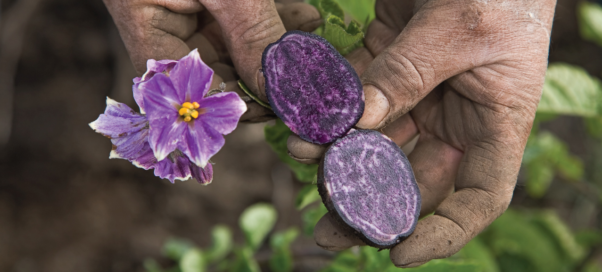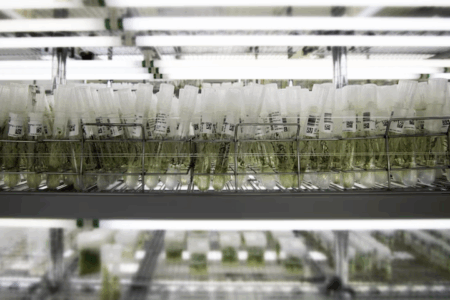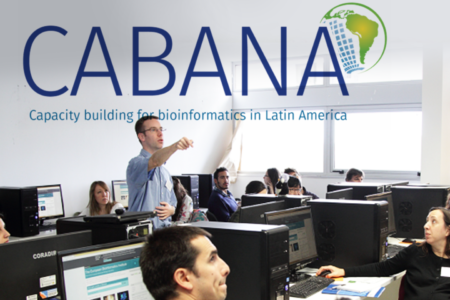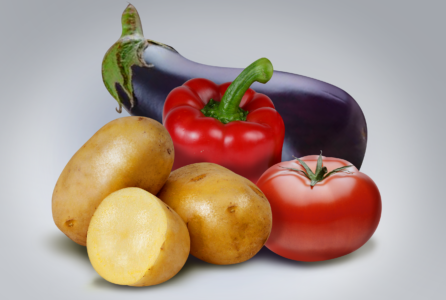Rapidly rising populations and urbanization particularly in developing countries, are straining the world’s, capacity to feed its peoples. Productive farm lands, natural habits and plant diversity—essential for doubling the production of nutritious food—are being degraded. The unpredictable impacts of natural disasters, environmental threats and a changing climate further threaten global food security. Land traditionally suitable for potato and sweetpotato cultivation is becoming less predominant due to insect and disease pressures from warming climates, as cultivation is forced to move to elevations where centuries-old varieties and farming practices may no longer be tenable. As soil quality worsens, productivity and yields suffer. Conservation and use of crop genetic diversity offers options to face these challenges.
Key achievements

The genebank drives the efforts of the International Potato Center (CIP) to conserve the world’s genetic diversity —cultivated, wild and breeding material—of potato and sweetpotato for future use. It plays a critical role in facilitating the impact-oriented release of CIP innovations and products, particularly suitable varieties for farmers and consumers. In situ and ex situ conservation of genetic diversity is critical for preserving and monitoring changes in the world’s plant genetic resources for food and agriculture. Lost genetic diversity—particularly of crop wild relatives—would restrict the ability of crop breeders and researchers to enhance farmers’ resilience and ability to produce enough nutritious food for the world.
The CIP genebank conserves—in vitro and in seed— the world’s most extensive collections of potato, sweetpotato and their wild relatives, as well as an unique collection of Andean roots and tubers—the genetic, physiological and biochemical attributes of which the scientific community has just begun to explore. CIP safeguards that biodiversity in trust for humanity to ensure its availability for breeding and other uses now and in the future. CIP employs cryopreservation of living plant material at -196°C and backs up its seed collection at the Svalbard Global Seed Vault in Norway, as well maintains a vast herbarium collection supporting scientific research. We also work closely with Andean communities on in situ conservation of potato diversity and have repatriated thousands of accessions previously lost to them due to civil unrest, disease or climate change.
The genebank serves as a model through its advanced research, public database and interactive use of collections. CIP works with other genebanks to ensure that clean material from its collections is backed-up, preventing the loss of diversity already in conservation. Safeguarding crop biodiversity and enhancing the efficiency of genetic resources conservation play critical roles in facilitating the development and release of new varieties for farmers and consumers across the globe.
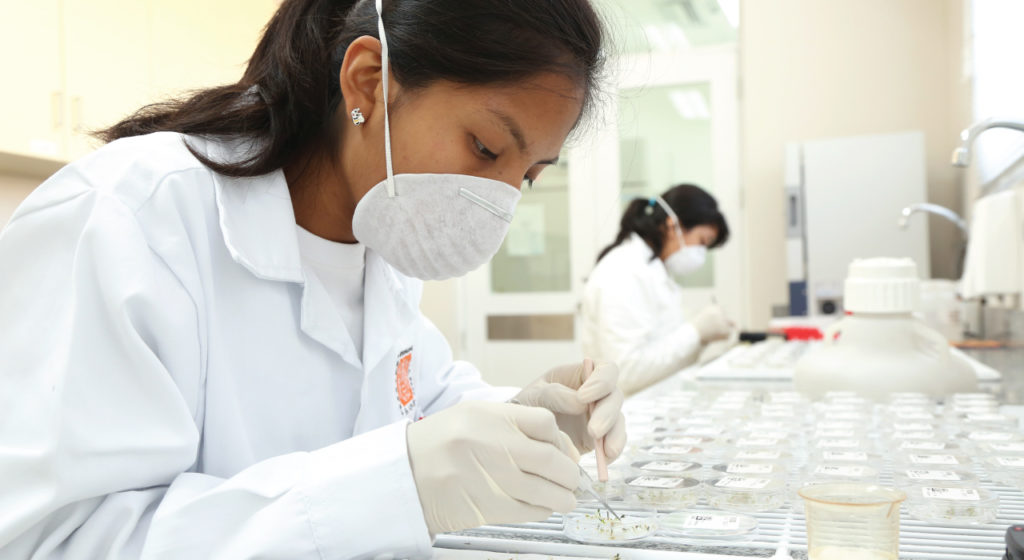
Research-for-development program products
These approaches help build stronger, more responsive, user-oriented collection management strategies. They address the conservation and availability of diversity through the collection, acquisition and streamlining of phytosanitary cleaning, helping breeders and smallholders in developing countries swiftly obtain valuable germplasm.
Staff work to group accessions into subsets, facilitating use by researchers and efficiently capture user information. Online applications interface to ensure CIP data is available on access to easy-to-use global plant genetic resource information management systems, such as GRIN-global and Genesys. Other CIP applications offer an online ordering system with advanced click-and-order technologies.
CIP is making the complete catalog of accession-specific DNA fingerprinting and trait associations into one online system, supporting efforts to build the tools linking all potato and sweetpotato world collections together. We will provide access to technology and know-how and facilitate interactive access to DNA fingerprints to improve genebank management and information sharing globally.
The enhanced knowledge of the genomics of accession traits support the use of big data to optimize the use of biodiversity in breeding. CIP strives to incorporate these advances into our two-way exchanges with regional breeding hubs in Africa, China and Southeast Asia, facilitating pre-breeding efforts, the conservation and use of genetic materials, and exchange of accession-specific information and knowledge.
Critically important to the development of world collections, CIP monitors changes to regional and international legislation pertaining to the International Treaty on Plant Genetic Resources for Food and Agriculture and genebank collections. This enhanced understanding of legal frameworks facilitates germplasm collection, conservation, exchange, use and benefit sharing. It also supports the rationalization of national collections into a world collection network by:
- Identifying the major collections and works with them, one by one, through DNA fingerprinting to facilitate the identification of each collection’s uniqueness;
- Working with other genebanks to ensure the phytosanitary clean material is backed-up to prevent loss of diversity already in conservation; and
- Returning this material to the original collection, ensuring national collections have clean material for distribution
This product develops and assesses models for in situ conservation, including the characterization and quantification of the benefits of conservation to resilience, such as provision of nutrients all year-round, yield stability and ongoing evolution as an adaptive mechanism. Research focuses on:
- The interaction between cultivated and wild potato diversity;
- The role of diversity in smallholder diets,
- Timeline-series monitoring of landrace and cultivar diversity;
- The role of institutions in provisioning and repatriating planting materials.
This product seeks to improve understanding of the genetics of crop wild relatives. Having evolved in response to a multitude of stresses and constraints, crop wild relatives contain the genetic constituents and gene combinations to help the cultivated crops overcome many of the challenges facing agriculture. The knowledge on and conservation of crop wild relatives and their availability to breeders provide the foundation for future crop improvement.
News categorized from the Biodiversity for the future program
Projects from the Biodiversity for the future program
Feed the Future Bangladesh—A systems approach to better nutrition
Unsupported format




